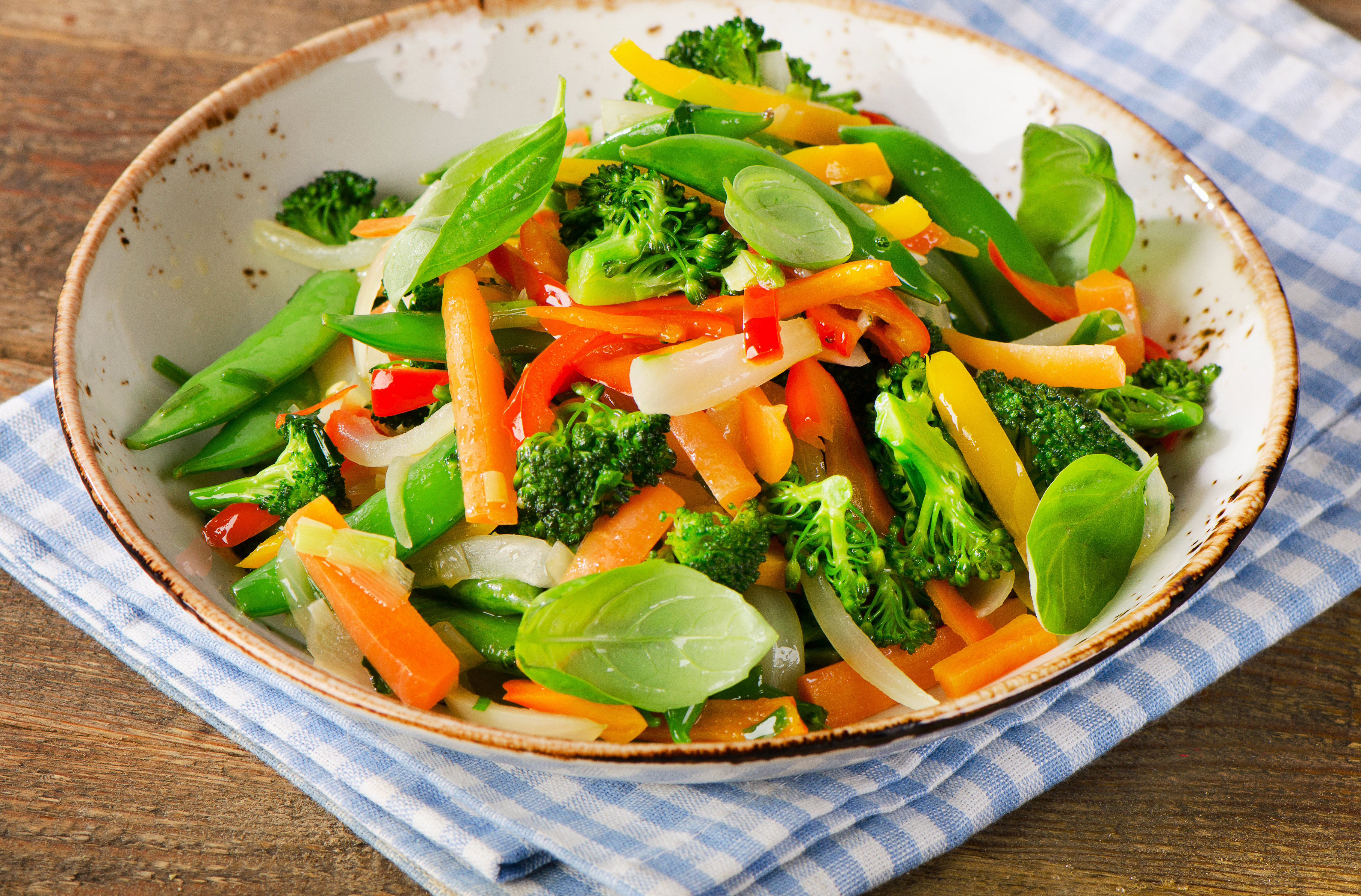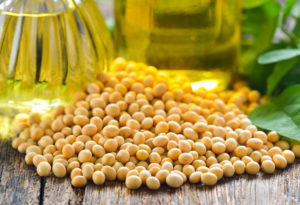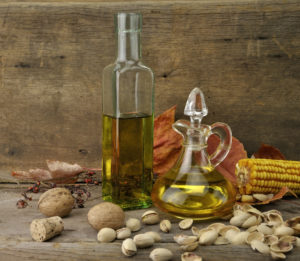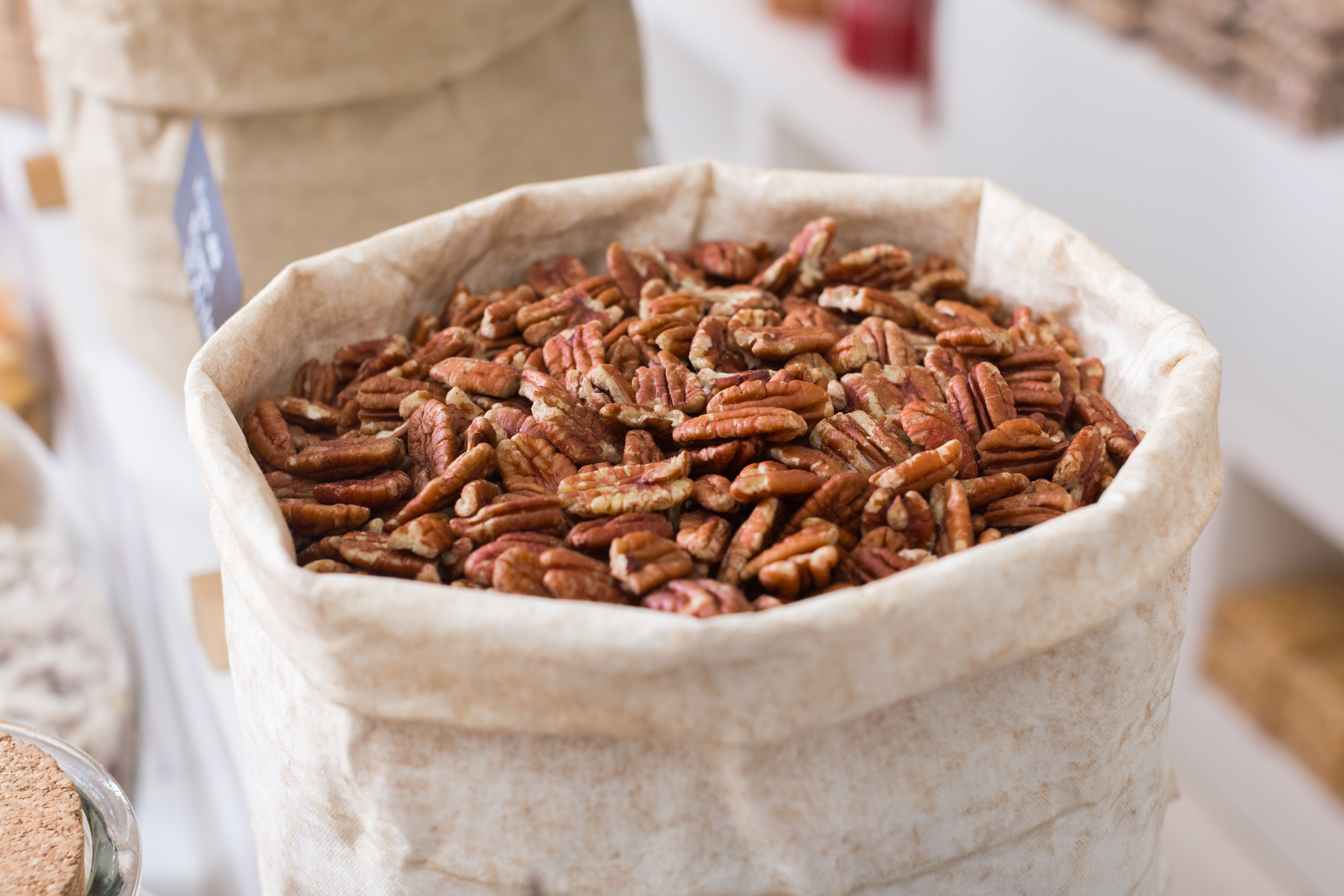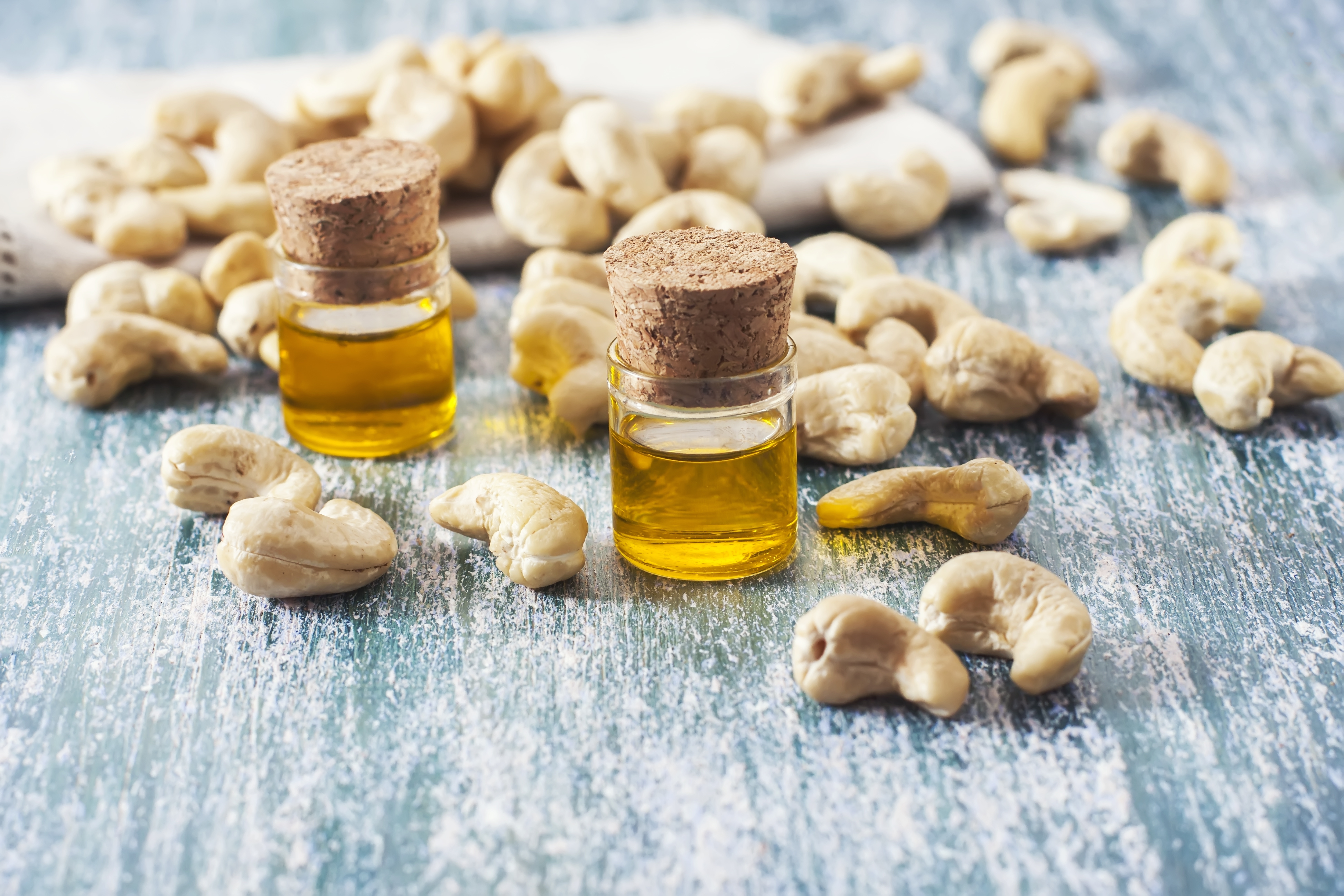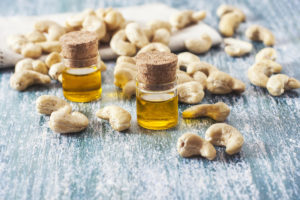
Different cooking methods require different oils. Many oils are very versatile but have dishes that they are better suited to cook than others. Depending on what you are cooking, the healthiest oil to use may vary.
An oil that is good for salad dressings may not be the best oil to sauté with. There are a few factors that dictate which oil you should use for each recipe. These factors include what you are cooking, how you are cooking it, the different kinds of fat in the oil, and the smoke point of the oil. If you use the wrong oil, your meal can be ruined as well as your diet. Here are a couple of guidelines to use when choosing an oil for sautéing.
Kinds of Fat
There are several different kinds of fat present in your foods. Some are good fats, and some not so good. Saturated fats and trans fats can cause your cholesterol to go up as well as cause unhealthy weight gain. Trans fat, in particular, increase your low-density lipoprotein (bad cholesterol) and decrease your high-density lipoprotein (good cholesterol). Other factors may include adverse effects on heart health, the risk of cancer, and obesity. The American Heart Association suggests that you lower your trans-fat intake to less than 7 percent of your caloric intake.
Polyunsaturated and monounsaturated fats have a different effect. They are known to improve cholesterol levels. Monounsaturated fats, in particular, are crucial to pay attention to when cooking. Monounsaturated fat has a high resistance to the oxidation and hydrogenation processes that can occur when cooking in high heat. These are the processes that can turn many oils into trans fats, which is definitely not what you want. Monounsaturated fats don’t have this problem because they are extremely heat resistant. If your oil is low in monounsaturated fats, then it may not be a good idea to sauté with it. However, sautéing does not require as much heat as many other forms of cooking. This can make it a little easier to find an excellent oil to sauté with because the monounsaturated fat content isn’t quite as crucial. Either way, to be safe, I would still recommend using heat resistant oils for cooking any meal.
Smoke Point
The smoke point is also a crucial factor when choosing an oil to cook with. The smoke point is the temperature that oil degrades at. When it gets to that point, the oil will begin to produce toxic properties that you should not consume. This is because oil is becoming more oxidized. When the oil has a higher smoke point, the food cooks more quickly and absorbs less of the oil. This is much better for your health. When sautéing foods, the temperature range is between about 170 to 320-degrees Fahrenheit. However, it is entirely dependent on what you are cooking. This makes choosing a sautéing oil different on a case-by-case basis. If you sauté with an oil that has a lower smoke point then required by the food item, you will lose most of the health benefits that the oil has to offer. In addition to killing the unique taste of the oil. You can tell when you are overcooking an oil by the smoke that will start to rise.
Stir-Frying vs. Sautéing
Sautéing and stir-frying have quite a few similarities. However, sautéing is a faster cook in a small amount of oil and a medium amount of heat. Alternatively, stir-frying requires much more fatand a much higher temperature. With sautéing, all the pieces can be cut to different sizes, while in a stir-fry all of the ingredients all need to be split evenly. They are both pretty high-speed cooking techniques, but a stir-fry requires constant movement of the pot or preferably wok. Stir-frying was named as such because of the continuous stirring required in the method. Sautéing can be used to cook part of a meal with the other pieces using an alternative cooking method. A stir-fry is always stir-fry. This means that all of the ingredients were cooked at the same time, all combined in the same pot. I would highly recommend using a wok for stir-fry to get the best results, but with sautéing you can use a standard cooking pan.
Tips for Sautéing at Home
Sautéing is a crucial technique to master. With proper sautéing skills, you will have hundreds of different recipes at your disposal. Sauté is a French word that means to jump. The cooking method is called this because you don’t want your food sitting in the pan for too long. When beginning, you should preheat your pan at about 212-degrees Fahrenheit. Once preheated, you can add your oil. If you add the oil to soon it will degrade. If the oil is straight out of the refrigerator, it will lower the heat of the pan considerably, so keep this in mind. You may want to turn the heat up a bit right before adding the oil to prevent the temperature from getting to low. You will know when the oil is ready when it begins to shimmer. Once you add your ingredients, be sure that they don’t start to smoke. If it does smoke, then take the pan off of the heat for a bit. If it burns too much, you may need to start over. Trial and error will help you with cooking times for each item because it can vary. You need to flip the items regularly, preferably with a cooking spoon. Never use a fork, it will cut into the meat, and the essential juices will escape.
5 Healthiest Oils for Sautéing
Extra Virgin Olive Oil
Extra virgin olive oil is much healthier than all of its lower grade siblings. However, it does have a lower smoking point than the other grades at only 325-375-degrees Fahrenheit. Anything over 375-degrees, and it will lose its flavor and health benefits. This makes it unsuitable for many kinds of cooking. Fortunately, it is high enough to sauté with. Extra virgin olive oil is high in monounsaturated fats and full of flavor. It is also a great finisher to drizzle on your finished product.
Safflower Oil
Safflower oil comes from the seeds of safflower and is mostly produced in California. It has an extremely high smoke point at 510-degrees Fahrenheit. This makes the oil very versatile and can be used for several kinds of cooking. Safflower oil is low in saturated fats and high in omega-9 fatty acids. Omega-9 fatty acids are known to improve cholesterol by increasing HDL levels and lowering LDL levels. They also destroy plaque build-up in the arteries, which contributes to heart attacks. Splurge on the cold-pressed safflower oil, and you can’t go wrong.
Peanut Oil
Peanut Oil is also known by the name groundnut oil. It has a light taste to it, which makes it a reliable option for several different dishes. Peanut oil also doesn’t absorb the flavor of the foods cooked in it. This is good because you can sauté a variety of items in it and not worry about the taste carrying over. Its smoke point is high at about 440-degrees Fahrenheit. However, it is high in polyunsaturated fat. This means that it is not very heat resistant, which makes it vulnerable to oxidation. However, this isn’t a big issue when sautéing. Peanut oil has great advantages to heart health, blood flow, and cholesterol. This makes it a healthy option for your sauté.
Sesame Oil
Sesame oil has a low smoke point of 350-degrees Fahrenheit. This makes it an unhealthy choice for high heat cooking. Fortunately, it is high enough to sauté with. You don’t need to use a lot of oil to get the job done. It is cold-pressed, like extra virgin olive oil, so you avoid the chemicals involved in the heat pressing process. Sesame oil is high in antioxidants, helps to lower your blood pressure, and helps in preventing diabetes.
Canola Oil
Canola oil is amongst the most highly regarded oils to sauté with. It has a medium-high smoke point at 400-degrees Fahrenheit, which makes it more than high enough to sauté with. The oil has a neutral flavor and will not overpower any of the ingredients in your dish. Canola oil is low in saturated fats and high in monounsaturated fats. The monounsaturated fat helps to lower harmful cholesterol levels, prevents clogged arteries, and heart disease. They also raise good cholesterol levels, which gets rid of the build-up in the arteries. The monounsaturated fat also makes canola oil very heat resistant and helps to avoid oxidation while cooking.
5 Unhealthiest Oils for Sautéing
Flaxseed Oil
Flaxseed oil does have some health advantages but should be avoided when cooking. Its smoke point is shallow at only 225-degrees Fahrenheit. The low smoke point of flaxseed oil can make it quite harmful when exposed to high heat. If exposed, all of the health advantages that it has will then decline. Flaxseed oil is also very vulnerable to the oxidation process. When using flaxseed oil, I would recommend using it for skin care purposes or as an addition to smoothies.
Hemp Seed Oil
Hemp seed oil has a pretty low smoke point at 330-degrees Fahrenheit. This is enough to sauté with, but that doesn’t mean that you should do it. Hemp seed oil is best when used as an addition to salads or yogurts. I do not recommend using it for cooking at all. If used for cooking, you will lose most of its nutritional value, and it will be vulnerable to the oxidation process. This makes it unhealthy to sauté with.
Soybean Oil
Soybean oil has a very high smoke point of about 450-degrees Fahrenheit. This makes it suitable to sauté with, but I would still recommend against it. Soybean oil is highly refined and goes through the bleaching and deodorizing process. This process butchers the healthiness of the oil. The oil is high in polyunsaturated fat, which makes it vulnerable to oxidation. This makes it a poor choice for cooking. Soybean oil is a prevalent oil in the fast-food industry and has been heavily linked to obesity. Soybean oil is just an extremely unhealthy choice to cook with.
Palm Oil
Palm oil isn’t a healthy option for a sauté. The oil mostly consists of saturated and monounsaturated fats. The high saturated fat content makes it likely to cause harm to your cardiovascular health. This can ruin the health value of your entire meal. Also, for you environmentalists, palm oil production is said to be very harmful to the environment. Palm oils smoke point is about 450-degrees Fahrenheit.
Pumpkin Seed Oil
Seed oils, in general, are risky to cook with. Pumpkin sees oils smoke point is relatively low at about 320-degrees Fahrenheit. This makes it reasonably unstable when heated. Pumpkin seed oil is at its best when it is used in salad dressings or marinades. It also has an intense flavor and can leave an undesired taste to your sauté. Pumpkin seed oil isn’t necessarily unhealthy but isn’t a good choice for cooking.
Closing Thoughts
Practice makes perfect, and it may take a little while for you to perfect your sautéing skills. However, once you do master it, it is excellent for cooking a variety of meats and vegetables. Like always, don’t reuse your oils from meal to meal to avoid oxidation. Also, pay attention to the flavor profile of the oil that you are using. This way, you can prevent different tastes. Now, get to jumping.

